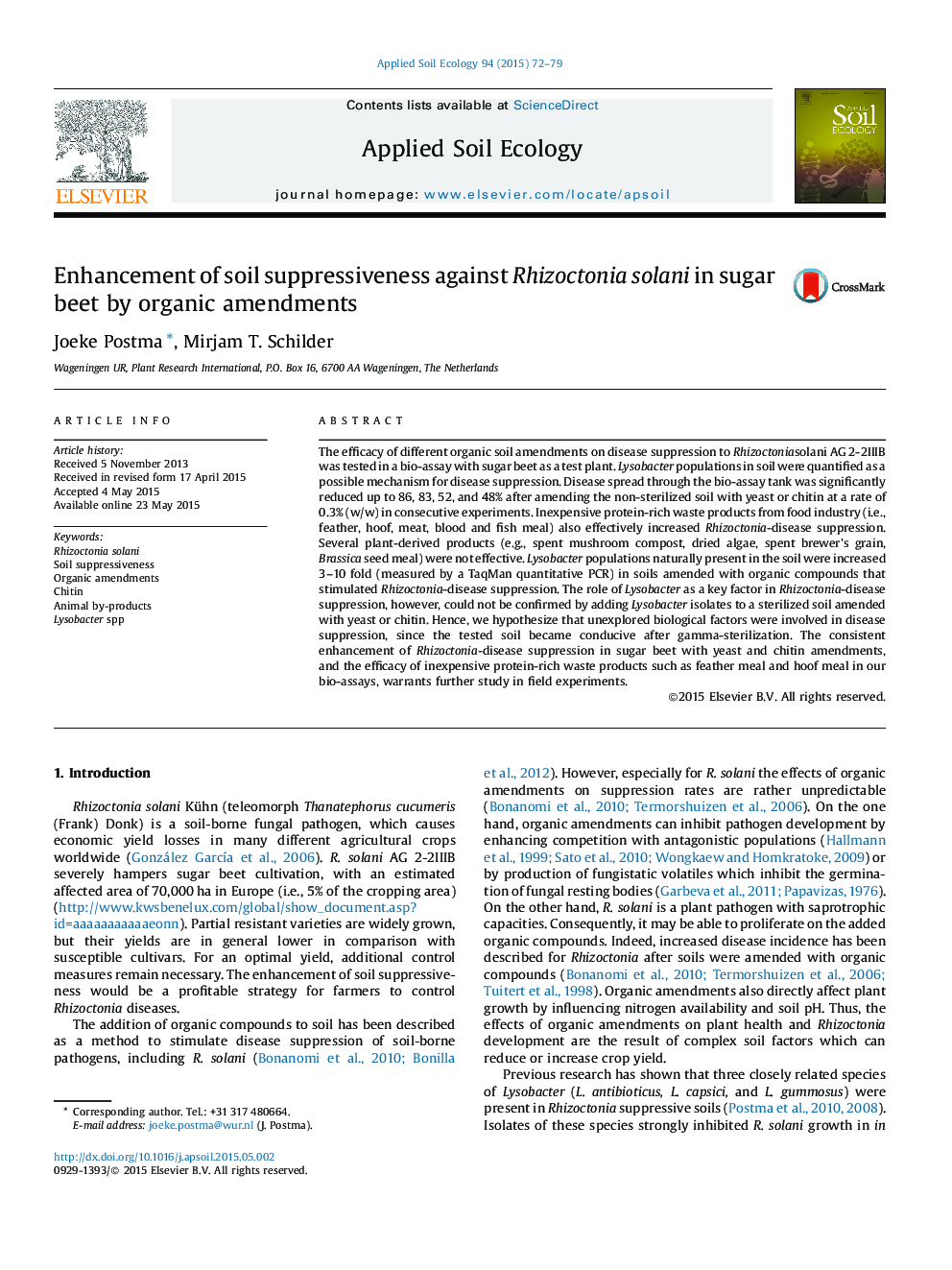| Article ID | Journal | Published Year | Pages | File Type |
|---|---|---|---|---|
| 4381961 | Applied Soil Ecology | 2015 | 8 Pages |
•Disease suppression to Rhizoctonia solani was evaluated in a sugar beet bio-assay.•Disease spread was reduced consistently up to 50–85% by organic amendments.•Chitin, yeast, and several animal by-products increased disease suppression.•Lysobacter populations in soil were elevated by these organic amendments.•The mode of action of the soil suppressiveness could not be elucidated.
The efficacy of different organic soil amendments on disease suppression to Rhizoctoniasolani AG 2-2IIIB was tested in a bio-assay with sugar beet as a test plant. Lysobacter populations in soil were quantified as a possible mechanism for disease suppression. Disease spread through the bio-assay tank was significantly reduced up to 86, 83, 52, and 48% after amending the non-sterilized soil with yeast or chitin at a rate of 0.3% (w/w) in consecutive experiments. Inexpensive protein-rich waste products from food industry (i.e., feather, hoof, meat, blood and fish meal) also effectively increased Rhizoctonia-disease suppression. Several plant-derived products (e.g., spent mushroom compost, dried algae, spent brewer’s grain, Brassica seed meal) were not effective. Lysobacter populations naturally present in the soil were increased 3–10 fold (measured by a TaqMan quantitative PCR) in soils amended with organic compounds that stimulated Rhizoctonia-disease suppression. The role of Lysobacter as a key factor in Rhizoctonia-disease suppression, however, could not be confirmed by adding Lysobacter isolates to a sterilized soil amended with yeast or chitin. Hence, we hypothesize that unexplored biological factors were involved in disease suppression, since the tested soil became conducive after gamma-sterilization. The consistent enhancement of Rhizoctonia-disease suppression in sugar beet with yeast and chitin amendments, and the efficacy of inexpensive protein-rich waste products such as feather meal and hoof meal in our bio-assays, warrants further study in field experiments.
